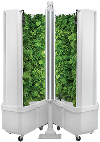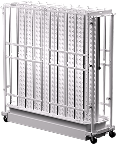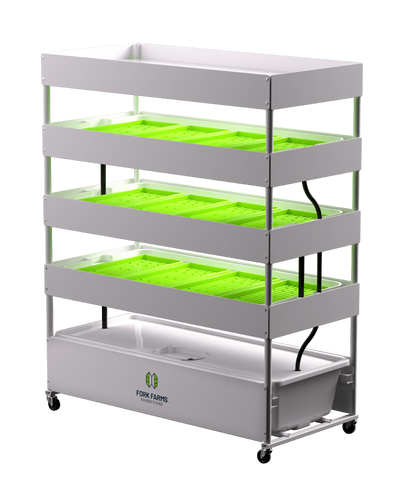How Technology Is Changing Indoor Hydroponic Farming
The potential uses for indoor hydroponic farming have exploded over the last few years. With so many communities and companies investing in the industry, a wealth of resources, technology, and education makes it possible for communities worldwide to succeed with hydroponic farming, and the progress has made it much more efficient, cost-effective, and easier to implement.
Indoor Hydroponic Industry Trends
With so many opportunities to expand and enhance your growth methodology, there has never been a better time to continue investing in indoor hydroponics long-term.
“It's still a little bit of the Wild West, and creativity is running rampant. That’s a great thing,” Thomas Graham, an environmental sciences researcher, said in an article for Wired about innovations in hydroponics.
These significant and creative advancements in hydroponics make it easy to set up a sustainable growing system and include trends such as:
Automated Growing Systems
Automated growing systems use sensors to monitor and adjust as needed the environmental conditions such as temperature, humidity, light, pH, nutrient levels, and more. This automation makes it easier to track and predict the success of your produce, and farmers can monitor and adjust optimal environmental conditions to grow plants without manual intervention. As automated growing systems can be managed from an app or web portal, this technology saves growers time and effort.
Automation also serves the sustainable essence of hydroponic farming, as smart nutrients provide balanced minerals and organic compounds to promote optimal growth without wasting resources.
Real-Time Data
Farmers can grow higher-quality produce with indoor hydroponics and acquire essential data to make their results more consistent. This is a great solution for growers looking to improve their craft, as the data processing software works in real-time to give growers insights. The larger emphasis on data allows for more progress in automation, effective staff skills development, and greater reliability in predicting crop output. In time, this increases profits and allows farmers to scale their efforts and provide fresh produce to growing communities.
Going Vertical
The vertical type of hydroponic growing system can be advantageous over horizontal units. With vertical growing systems, farmers can invest in more units and make better use of their spaces. As a result, growers can produce more plants in smaller areas, making vertical indoor hydroponic farming much more efficient than many traditional growing methods.
LED Lighting
LED lighting has increased in popularity and for good reason as it offers lower energy consumption, less heat emission, and longer life expectancy than other lighting forms. LED lights allow light to emit at specific wavelengths, helping plants absorb more energy from their environment while reducing energy costs. LED lights can also create different lighting effects, encouraging healthy root development and improving plant health, making it possible to grow plants indoors and crops year-round.
Hydroponics is a Part of a Greater Food Ecosystem
Around the world, different regions are adopting hydroponic technology to meet their population and cultural needs. By reallocating natural resources from crops requiring soil cultivation to crops grown hydroponically, farmers, communities, and enterprises can benefit. They can use smart technology to obtain a higher volume of consistently fresh produce while minimizing environmental waste. Indoor hydroponics is also a great solution in the face of climate change, extending growth seasons and bringing new types of produce and plants to harsh climates.
Farm-in-a-Box
Indoor hydroponic kits make growing more accessible for people who don’t have the space, equipment, or knowledge to set up a more extensive system. Kits contain everything you need to start: a nutrient solution, a growing medium, grow lights, and a timer. Ideal for beginners and people who want to grow produce in small spaces, kits provide an easy way to enter indoor hydroponics without an overly complicated setup.
Looking Ahead: The Promising Future of Hydroponics Tech Advancements
Hydroponics is a sustainable solution to food scarcity challenges and continues to contribute to sustainable agricultural practices. Using hydroponics, communities can reduce environmental impact, practice efficient resource utilization, and encourage education and skill development in emerging tech. Overall, hydroponics empower communities with self-sufficiency by strengthening food security in densely populated areas or areas with limited access to fresh foods.
Exploring Indoor Hydroponics with the Flex Farm
There are a lot of indoor hydroponic systems on the market that can help bring your goals to fruition. Our Flex Farm, for instance, comes with access to our exclusive hydroponics farming community, helping growers learn the ins and outs of hydroponic farming. Capable of growing 25+ lbs of fresh food every 28 days, our system makes it possible to harvest 3,400 plants annually.
Want to learn more about the possibilities of indoor hydroponics? Check out our Flex Farm today!
Important Links:
























